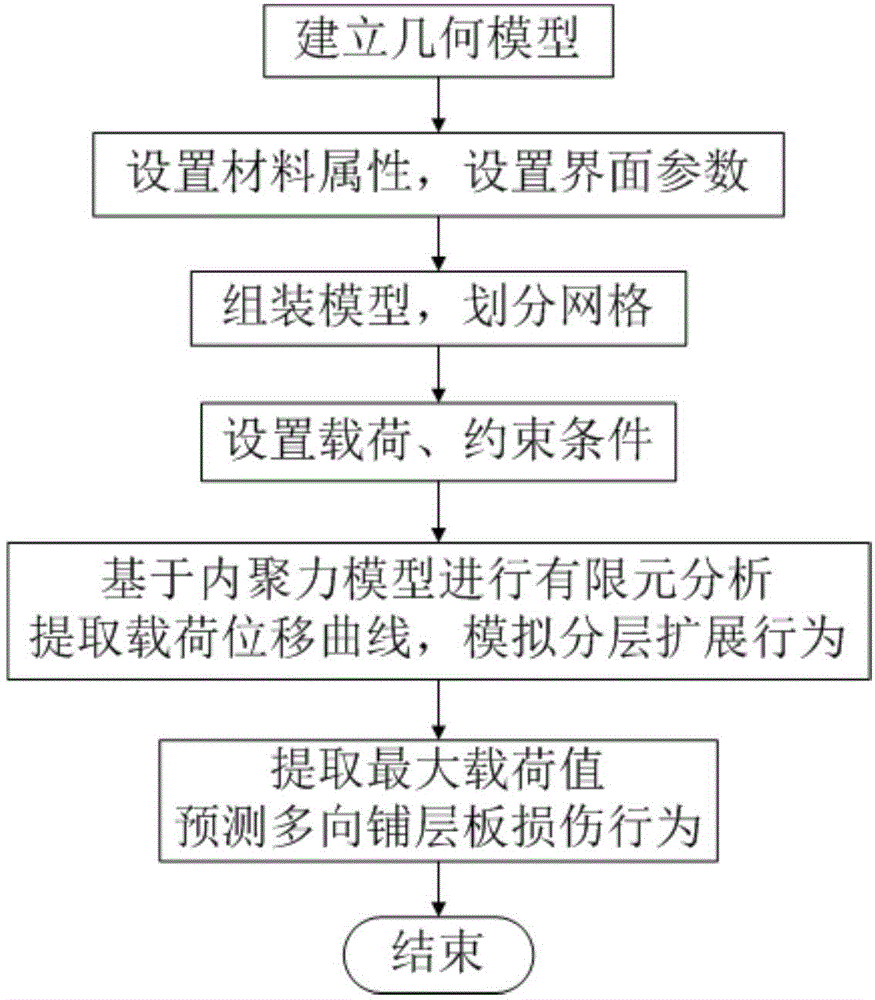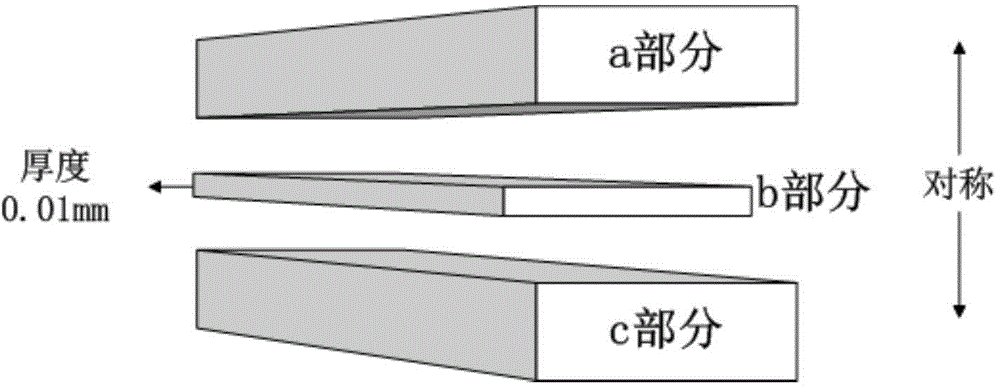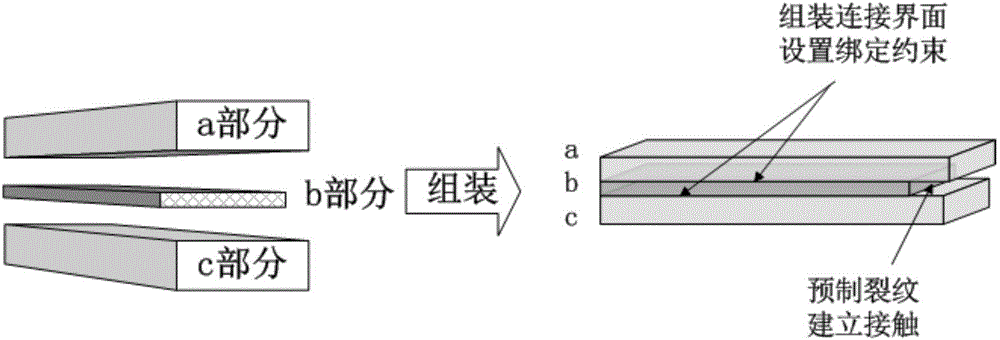Delamination propagation behavior simulation method of composite material multidirectional laminated plate on basis of cohesion model
A technology of composite materials and simulation methods, which is applied in the field of research and prediction of the delamination expansion behavior of composite multi-directional laminated boards. problems, to achieve the effect of reducing test costs and shortening the development cycle
- Summary
- Abstract
- Description
- Claims
- Application Information
AI Technical Summary
Problems solved by technology
Method used
Image
Examples
Embodiment Construction
[0038] like figure 1 Shown, the inventive method is specifically realized as:
[0039] 1. According to the structural parameter values of composite multi-directional laminated board specimens, the geometric model of the specimen is established in Abaqus software.
[0040] Open the Abaqus software, use the three-dimensional solid modeling function, draw the corresponding geometric contour diagram of the specimen in the two-dimensional plane according to the structural parameter values of the multi-directional composite laminated plate specimen, and establish the three-dimensional geometry respectively by means of solid stretching model, such as figure 2 As shown, the two parts a and c are stretched to half of the actual thickness value along the thickness direction, and part b is stretched 0.01mm along the thickness direction.
[0041] 2. Determine the key parameters that reflect the interface behavior, and set the layup angle and material properties.
[0042] Define the ...
PUM
 Login to View More
Login to View More Abstract
Description
Claims
Application Information
 Login to View More
Login to View More - R&D
- Intellectual Property
- Life Sciences
- Materials
- Tech Scout
- Unparalleled Data Quality
- Higher Quality Content
- 60% Fewer Hallucinations
Browse by: Latest US Patents, China's latest patents, Technical Efficacy Thesaurus, Application Domain, Technology Topic, Popular Technical Reports.
© 2025 PatSnap. All rights reserved.Legal|Privacy policy|Modern Slavery Act Transparency Statement|Sitemap|About US| Contact US: help@patsnap.com



